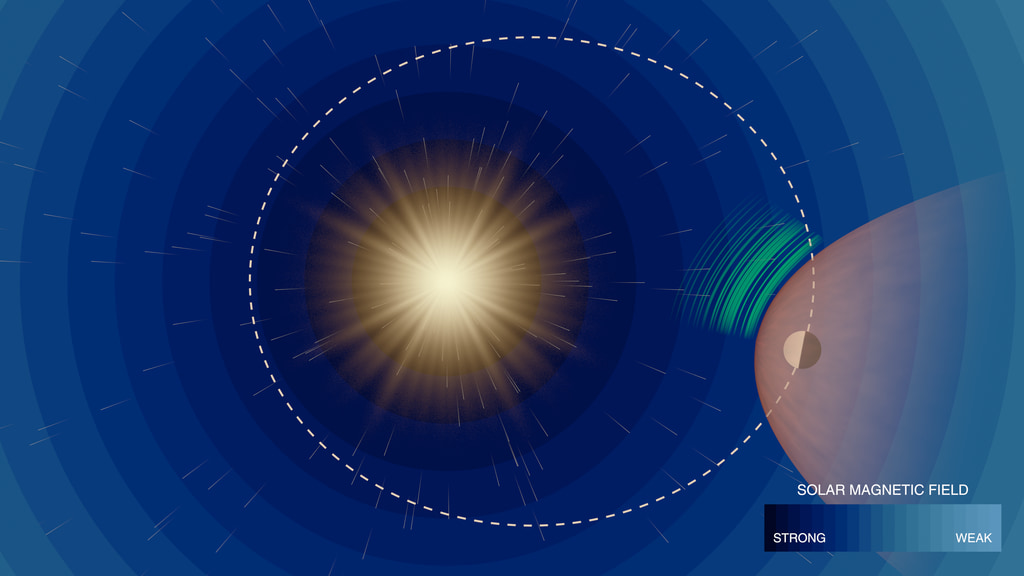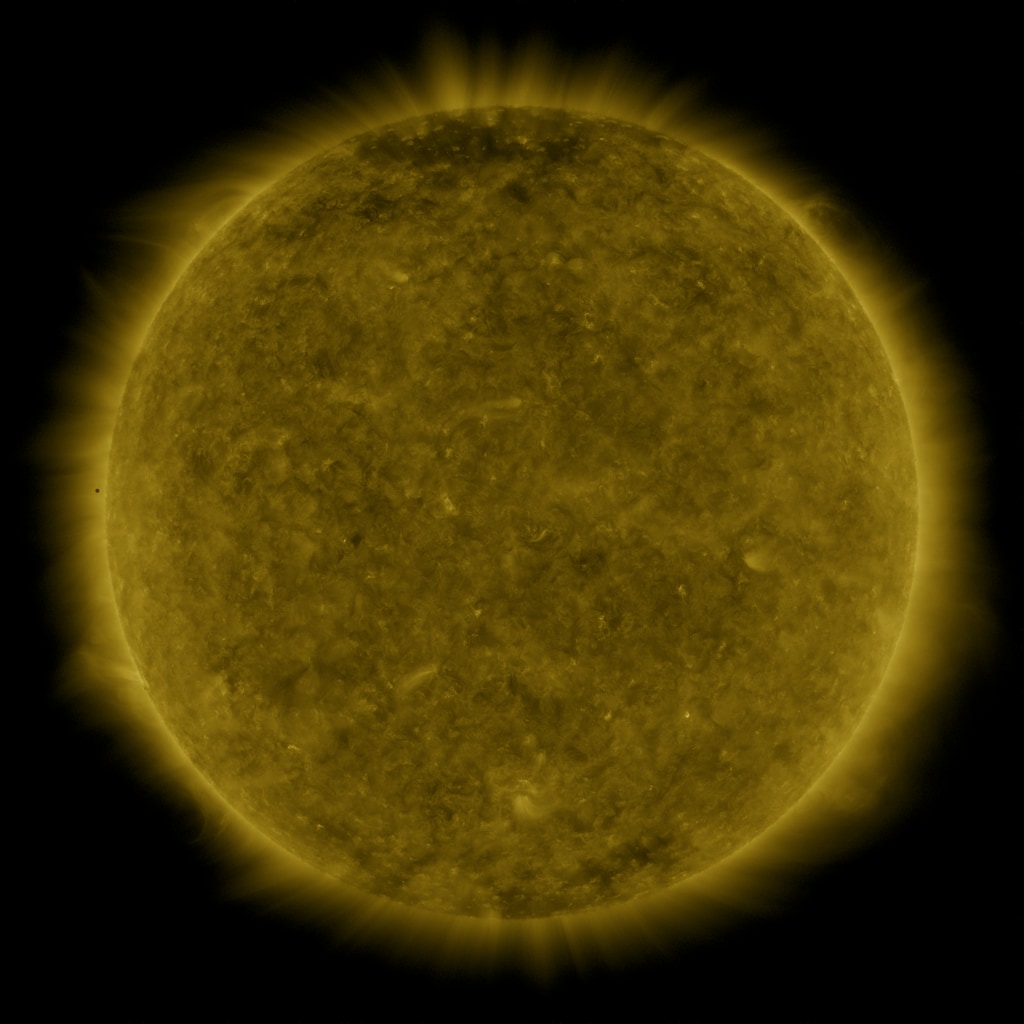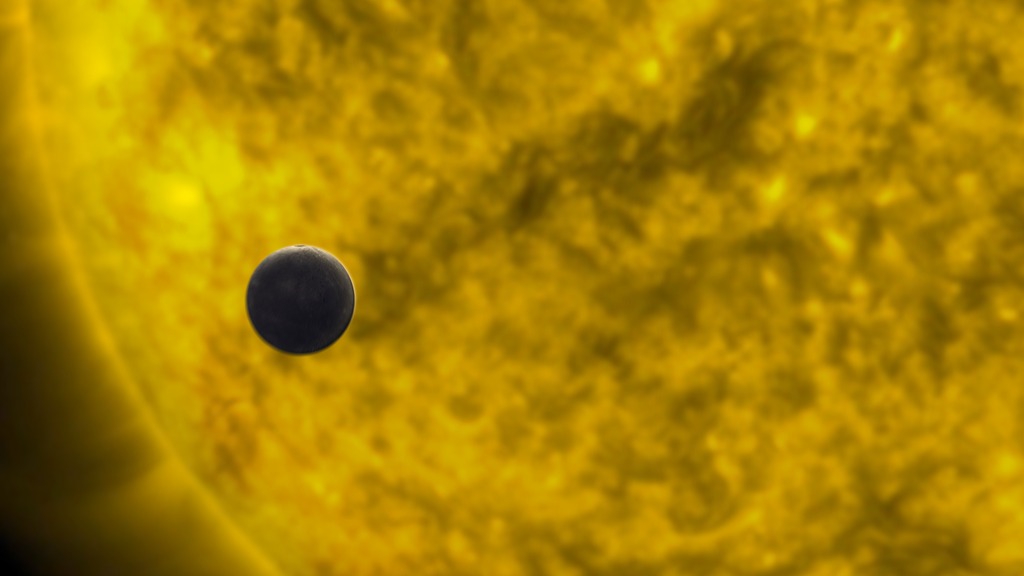What Mercury’s Unusual Orbit Reveals About the Sun
Mercury is special. As the closest planet to the Sun, it occupies a region where the Sun’s influence is changing dramatically. The Sun’s magnetic field, which dominates space close to the Sun, is rapidly waning. And Mercury’s orbit – more elliptical or “oval-shaped” than any other planet – allows it to experience a wider range of solar magnetic field conditions than any other planet. As a result, Mercury provides a unique opportunity to study how the Sun’s influence on a planet varies with distance.
In a new study published in Nature Communications, Goddard scientists Norberto Romanelli and Gina DiBraccio used data from NASA’s MESSENGER spacecraft to study the Sun’s changing interaction with Mercury. As Mercury moves through the solar wind, the steady stream of particles escaping the Sun, some of them strike Mercury’s magnetosphere and bounce back towards the Sun. These rebounding solar wind particles generate low-frequency waves that reverberate through space, traveling “upstream” in the solar wind towards the Sun.
Romanelli and DiBraccio observed these waves emanating from Mercury and discovered that the rate of wave production varied throughout Mercury’s orbit. As Mercury moved farther from the Sun it generated more waves; as it got closer, the rate of wave production dropped. The results provide key evidence for a theory that these waves are affected, in part, by the strength of the Sun’s magnetic field, which grows weaker with distance.
Music Credits: “Swirling Blizzard” by Laurent Dury [SACEM], “Sparkle Shimmer” by William Henries [PRS] and Michael Holborn [PRS] from Universal Production Music
Additional footage from:
Science@NASA:
https://science.nasa.gov/science-news/news-articles/on-the-cusp-of-understanding
JPL:
https://www.youtube.com/watch?v=DMZ5WFRbSTc
Johns Hopkins University Applied Physics Lab:
Credits
Please give credit for this item to:
NASA's Goddard Space Flight Center/JHUAPL
-
Producers
- Miles S. Hatfield (Telophase)
- Anna Blaustein (NASA/GSFC)
-
Scientists
- Norberto Romanelli (NASA/GSFC, University of Maryland, College Park)
- Gina A. DiBraccio (NASA/GSFC)
Release date
This page was originally published on Thursday, March 24, 2022.
This page was last updated on Wednesday, May 3, 2023 at 11:44 AM EDT.








